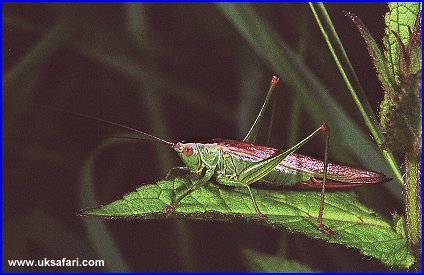|

Home
Free Newsletter
Subscribe now.
Simply enter your details and hit send.
Amphibians
Animal Parks
Art
Birds
Bookshop
Butterflies
Camping Sites
Creepy-Crawlies
Dragonflies
Freshwater Life
Gardening
Holidays + Tours
Jobs
Mammals
Marine Wildlife
Moths
Museums
News
Organisations
Photography
Plants + Trees
Reptiles
Search
Shopping
Walking
Weather
Wildlife Rescue
Wild Places
World Wildlife
About Us
Add A Site
Copyright
Disclaimer
Privacy Policy
|

Field Cricket

Description: Photo uploaded by Sue North.
I use a Nikon F100, or a Nikon F90. I use a twin flash set up to eliminate shadow.
It's a bit complicated to use, and I have taken many test rolls of film to get to this point where I can now reasonably confidently expect to get some consistent results.
For insect work I use a Nikkor 105mm micro lens with a 4x close up magnifying filter screwed on to the front. I rarely use a tripod, because I like to be mobile and agile. The twin flash set up is mounted on extending arms that bolt to the bottom of the camera, in the tripod location hole. On the end of these arms are mounted flash heads, which can be set at side angles to the subject. Both flash heads would be in front of the lens, eliminating the possibility of the lens creating a shadow. The system provides, effectively, balanced side lighting. Both flash heads are diffused by sticking kitchen paper towel or a purpose built diffuser over them.
In terms of exposure, because the micro set up has such a shallow depth of field, it is important to select the smallest aperture available
(e.g. f32 or f22) to gain the maximum depth of field. Anything larger is likely to have feet or
antennae which are out of focus. The twin flash set up allows me to use f32 most of the time.
Go Back
© 2001 - G. Bradley
|